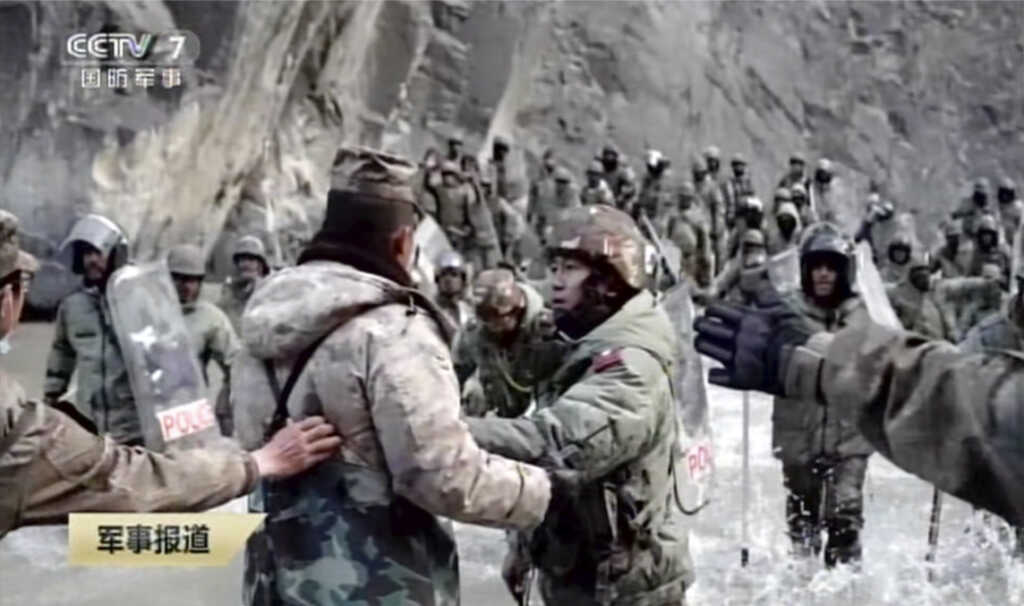Just one year after a bloody dispute involving Indian and Chinese soldiers, both sides are now deploying more troops along the 2,000-mile border between the two countries.
WATCH THIS REPORT AND BE SURE TO SUBSCRIBE TO THE CBN NEWS YOUTUBE CHANNEL!
“We are seeing on the Chinese side roughly 200 thousand troops, according to some estimates, flow into areas around the border,” Zack Cooper, a senior fellow with the American Enterprise Institute, told CBN News.
And what’s been seen as the biggest deployment in India’s history, some 50 thousand additional soldiers are matching China’s current troop strength in the area.
“What’s important is the sort of troops they [India] have,” Cleo Paskal with the Foundation for Defense of Democracies, noted. “They have some pretty serious high-altitude fighters embedded among them; This is a serious deployment designed to try to make the PLA [People’s Liberation Army] be very concerned about doing a land offensive again.”
Both sides are said to be building new roads, bunkers, tunnels, runways, and moving in advanced military hardware.
The Wall Street Journal reporting that China has deployed surface-to-air missiles and anti-missile batteries, while India has beefed up its air force.
“Both India and China are nuclear-armed countries so if a confrontation does take place on that border, it would be problematic for the world and for the United States,” warned Aparna Pande of the Hudson Institute.
DAILY NEWS AND CHRISTIAN VIEWS: SUBSCRIBE TO OUR PODCAST NOW!
Six decades after the Sino-Indian war, the world’s two most populated countries are still going at it in the Himalayas.
The last clash coming in June 2020 when Chinese soldiers took several square miles of Indian territory in the Galwan valley.
Indian soldiers fought back, losing 20 of their own. China says 4 of its men died, though that number is thought to be much higher.
It was the deadliest incident between the Asian giants in 45 years.
Dozens of high-level talks since then have failed to calm growing tensions between Beijing and New Delhi.
“Against such a backdrop, the words and deeds of major military and political officials and military deployments should help ease the situation and increase mutual trust between the two sides,” said Wang Wenbin, a spokesperson with China’s Ministry of Foreign Affairs.
But it hasn’t – leaving India increasingly mistrustful of a powerful neighbor that’s pursuing regional and global ambitions
“The overt goal of the Chinese Communist Party is global hegemony and that begins in the Indo-Pacific,” Paskal told CBN News. “Within the Indo-Pacific region, the biggest counter to their narrative is India and the goal is basically to fragment and render India inoperative because India is the best hope for other democracies in the region to try to withstand China’s aggressive expansion.”
In the past year, Beijing has expanded political and economic fights spreading to Vietnam, the Philippines, Bhutan, Nepal, Australia, and Indonesia.
“This is not a one-off, that China is only threatening India, this is part of Chinese aggressive behavior against all its neighbors, against any country that it considers a rival,” Pande told CBN News.
Indo-China watchers say it’s all part of President Xi Jinping’s goal to also drive a wedge between Washington and New Delhi.
“What’s very important, from an American perspective, is to understand that there is an active political warfare campaign designed to make us distrust and dislike India so that India and the U.S. can’t come together to fight what is an existential threat to both of us, which is the Chinese Communist Party,” said Paskal.
Meanwhile, top Indian military commanders openly talk about their concerns of a simultaneous conflict with arch-rival Pakistan on its western flank and China to the east.
Both countries continue to forge deep military and strategic ties.
“You could end up with a 2-front war, you can end up in a war in which Pakistan engages in a conflict and then China opportunistically goes in to try and seize a bit of territory so Indian forces are much more stressed now than they were I think even a few years ago,” warned Cooper.
Experts worry that with these additional troop deployments come possibilities of a miscalculation on either side that could result in more clashes.


